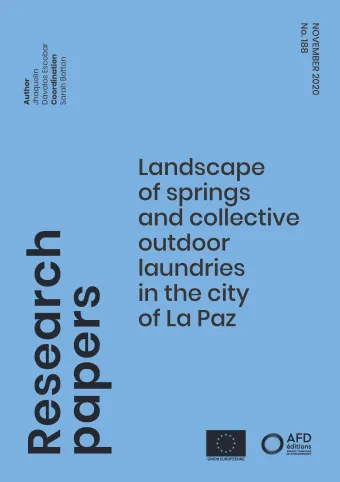Share the page
Landscape of springs and collective outdoor laundries in the city of La Paz
Published on

The landscape of springs in the municipality of La Paz has been shaped by glaciers and rainwater deposits accumulated for years. In view of the landslides, the springs were stigmatized by urban planning and diverted to the sewers. When the drought hit, they were sought after, since it was discovered that they have good quality freshwater for consumption. Collective laundries, as an architectural object, arise to prevent the closure of the springs when drinking water appears on the slopes. The territories are losing their management over the resource and that is why today they are focusing on the maintenance of the laundries. This article – based on a visual study on the landscape and the social use of springs and following the track of the collective washing of clothes – sets forth a series of reflections on the resumption of our relationship with these sources.
Useful Information
-
Authors
-
Jhaquelin Dávalos ESCOBAR
-
Coordinators
-
Sarah BOTTON
-
Edition
-
188
-
Number of pages
-
34
-
ISSN
-
2492 - 2846
-
Collection
-
Research Papers
